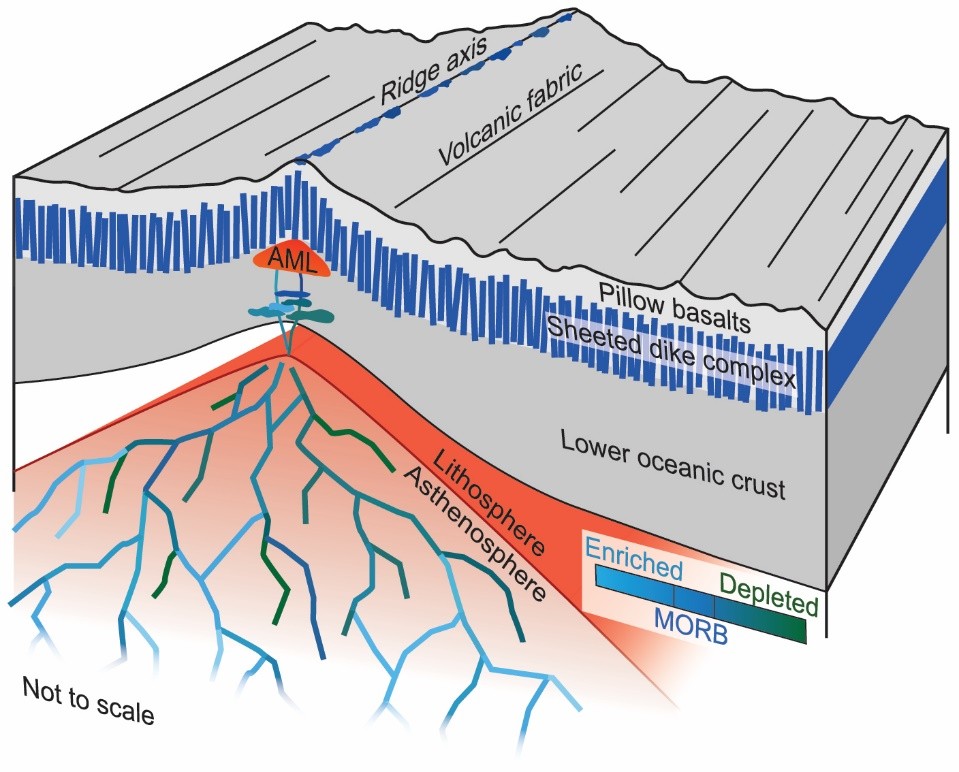A new study on the isotopic heterogeneity of gabbros from the Hess Deep

The oceanic crust crystallizes from melts generated within a heterogeneous mantle source, composed mainly of peridotites variably depleted by ancient partial melting processes and recycled oceanic crust. However, the compositional variability of this mantle source and the progressive aggregation of heterogeneous melts during extraction remain poorly understood. This article shows that in situ isotopic analyses in gabbros formed at the East Pacific Rise preserve significantly greater Sr-Nd-Hf isotopic heterogeneity than the basalts erupted along the same fast-spreading ridge. This implies that magma aggregation during migration through the upper mantle and lower crust is inefficient, even at oceanic ridges characterized by intense magmatic activity. Efficient melt mixing likely occurs in the overlying axial melt lens. Local isotopic heterogeneity observed in the Hess Deep gabbros indicates incomplete mixing of primary magmas, generated from peridotites with varying degrees of depletion and from recycled oceanic crust at least 1.5 billion years old. The isotopic heterogeneity recorded in lower gabbros reinforces the idea that basalt compositions represent only a portion of the full compositional spectrum of magmas that pass through the mid-ocean ridge magmatic plumbing system. These results highlight the complexity of magma mixing processes beneath fast-spreading mid-ocean ridges and indicate the need to revise existing models in order to accurately represent the formation and evolution of oceanic crust.
References
Basch V., Sanfilippo A., Genske F., Böhnke M., Zanetti A. and Stracke A., 2025. Inefficient melt mixing below a fast-spreading ridge revealed by Hess Deep lower gabbros (ODP Leg 147 and IODP Expedition 345), Science Advances, 11, doi: 10.1126/sciadv.adu2044, https://www.science.org/doi/epdf/10.1126/sciadv.adu2044.
For information: Alberto Zanetti, CNR-IGG (alberto.zanetti@cnr.it).